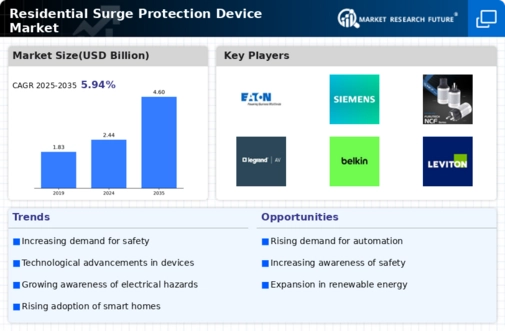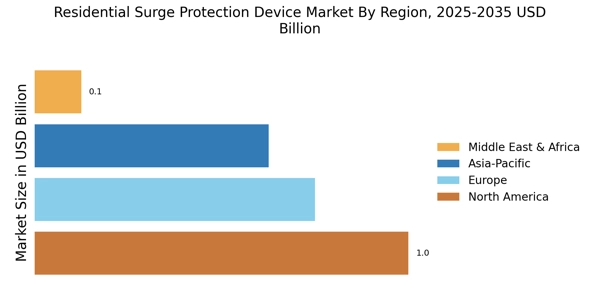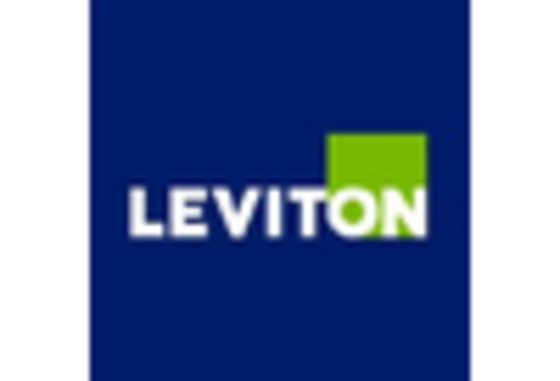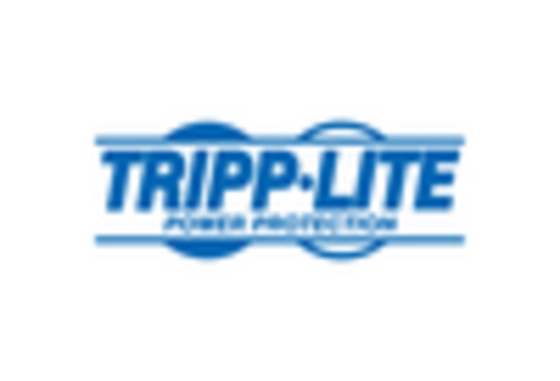Increased Focus on Home Safety
An increased focus on home safety and security is emerging as a significant driver for the Residential Surge Protection Device Market. Homeowners are becoming more proactive in protecting their properties from various risks, including electrical surges. This heightened awareness is leading to a greater demand for surge protection devices, as consumers recognize the potential hazards associated with unprotected electrical systems. Additionally, insurance companies are beginning to offer incentives for homeowners who invest in surge protection, further encouraging adoption. The market is projected to expand as safety becomes a priority for consumers, leading to increased sales of residential surge protection devices.
Rising Adoption of Smart Homes
The rising adoption of smart home technologies is contributing to the growth of the Residential Surge Protection Device Market. As more households integrate smart devices into their daily lives, the need for reliable surge protection becomes increasingly critical. Smart home devices, which often represent significant financial investments, require protection from power surges to ensure their longevity and functionality. Market data indicates that the smart home market is expected to grow at a compound annual growth rate of over 25% in the coming years. This surge in smart home adoption is likely to drive demand for residential surge protection devices, as consumers seek to safeguard their investments in technology.
Regulatory Standards and Compliance
Regulatory standards and compliance requirements are playing a crucial role in shaping the Residential Surge Protection Device Market. Governments and regulatory bodies are increasingly implementing guidelines that mandate the use of surge protection devices in residential buildings. These regulations aim to enhance electrical safety and reduce the risk of damage caused by power surges. As a result, manufacturers are compelled to develop products that meet these standards, driving innovation and market growth. The enforcement of such regulations is expected to lead to a rise in the installation of residential surge protection devices, as homeowners seek to comply with safety requirements and protect their electrical systems.
Increasing Frequency of Power Surges
The increasing frequency of power surges due to various factors such as extreme weather events and aging electrical infrastructure appears to be a primary driver for the Residential Surge Protection Device Market. Power surges can cause significant damage to household electronics and appliances, leading to costly repairs or replacements. As a result, homeowners are becoming more aware of the need for surge protection devices. According to recent data, the demand for surge protection devices has seen a notable increase, with a projected growth rate of approximately 7% annually. This trend suggests that consumers are prioritizing the protection of their investments in electronic devices, thereby driving the market for residential surge protection devices.
Technological Innovations in Surge Protection
Technological innovations in surge protection devices are likely to enhance the functionality and efficiency of products within the Residential Surge Protection Device Market. Advancements such as smart surge protectors, which can monitor energy usage and provide real-time alerts, are becoming increasingly popular among consumers. These innovations not only improve user experience but also offer enhanced protection against power surges. The integration of IoT technology into surge protection devices is expected to further drive market growth, as consumers seek more sophisticated solutions for their homes. As a result, manufacturers are investing in research and development to create cutting-edge products that meet the evolving needs of consumers.


















Leave a Comment